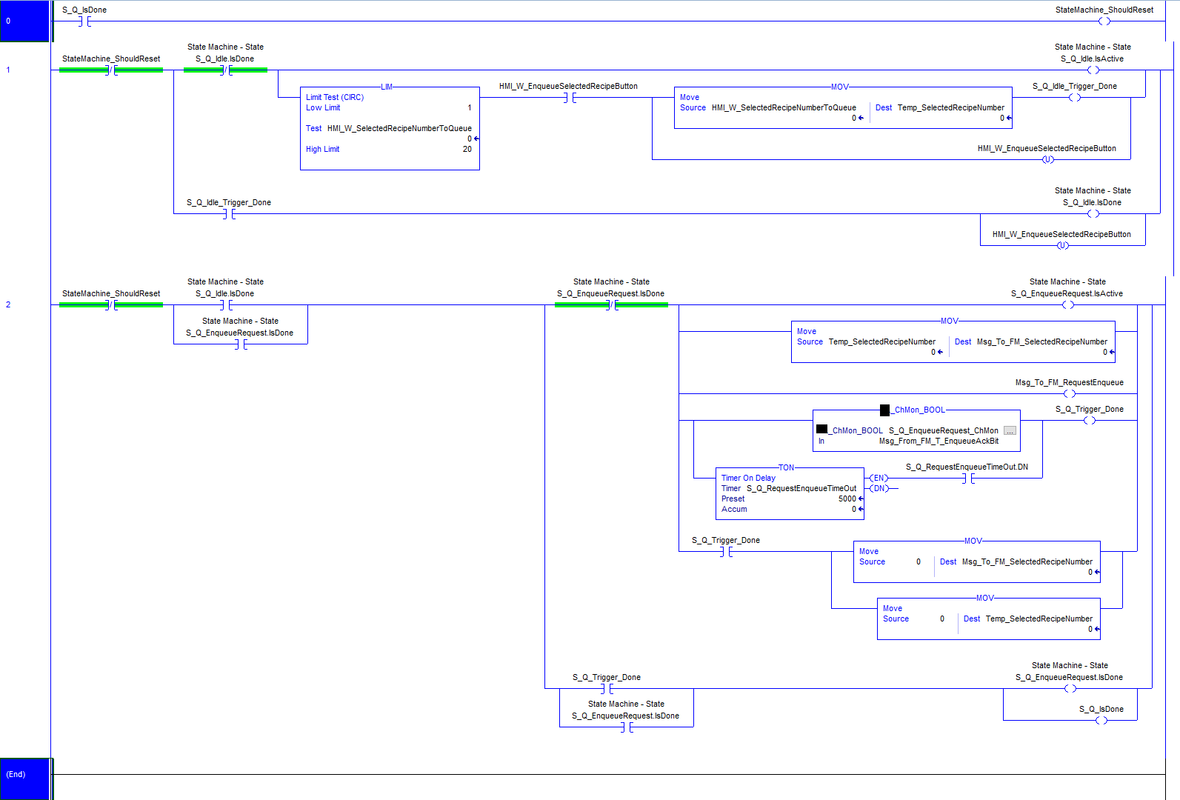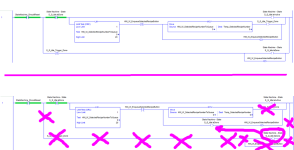theColonel26
Lifetime Supporting Member
So I just wrote this 2 state, state machine. For sending a request to be added to a queue on a remote PLC.
Pretty simple,

Pretty simple,
- Sit idle until Recipe number is valid and user presses a button
- Then move to next state
- Send RecipeNumber and Send Request to Enqueue.
- Wait for Ack back from Machine that the recipe has been successfully enqueued or that the request has timed out.
- Then reset everything back to idle.







